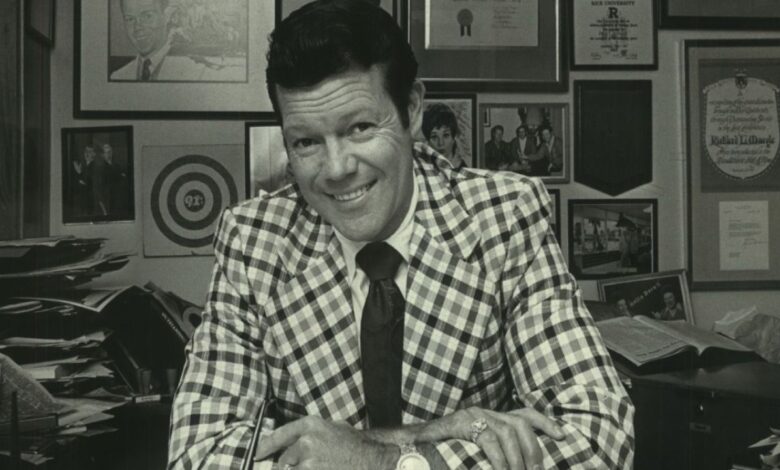Dickey Maegle’s 1979 Interview: A Comprehensive Reflection on an Illustrious Career

In 1979, Dickey Maegle, a former major league baseball player and a star running back at Rice University, granted an interview that shed light on the various facets of his career and life. Known for the infamous incident during the 1954 Cotton Bowl, where he was tackled by an opposing player who came off the bench, Maegle’s career was marked by both spectacular highs and challenging lows. This detailed article aims to cover the critical aspects of that pivotal 1979 interview, providing insights into Maegle’s thoughts, struggles, and life after football.
The Infamous 1954 Cotton Bowl Incident
Dickey Maegle’s name became synonymous with one of college football’s most bizarre moments during the 1954 Cotton Bowl. As Maegle dashed towards what seemed like an apparent touchdown, Alabama’s Tommy Lewis inexplicably tackled him from the sidelines. This act of sportsmanship gone awry and catapulted Maegle into the national spotlight. Reflecting on the incident in 1979, Maegle expressed no bitterness towards Lewis, recognizing it as a “heat of the moment” mistake. He emphasized that the tackle’s notoriety never bothered him, showcasing his kindness and resilience.
Transition to the NFL and Struggles
Despite his college success, Maegle’s transition to the NFL was fraught with challenges. Drafted by the San Francisco 49ers, he was primarily utilized as a defensive back, a significant shift from his college position. This change and injuries hindered his ability to reach his full potential in the league. Maegle’s candidness about his struggles in the NFL underscored the difficulties many athletes face when transitioning to the professional level. He shared his reflections on what might have been had injuries not curtailed his career and displayed a forward-looking perspective, focusing on the positive aspects of his life and career.
Life Beyond Football
After his premature departure from the NFL due to injuries, Maegle embarked on a new journey in real estate and business back in Texas. His post-football life was marked by success and fulfillment, a testament to his ability to adapt and thrive beyond the gridiron. Maegle’s reflections on his life after football revealed a man at peace with his past and content with his achievements outside of sports. This interview aspect provided:
- A powerful narrative on the possibilities that lie beyond professional sports.
- We are emphasizing the importance of identity.
- Resilience.
- Personal growth.
Legacy and Significance of the Interview
The 1979 interview went beyond the typical athlete retrospective, offering deep insights into Maegle’s personal and professional life. It served as a meaningful artifact in sports history, providing rare insight into the mindset of a top athlete from the 1950s. Maegle’s openness and introspection offered valuable lessons in humility, perseverance, and the significance of moving forward, irrespective of past achievements or setbacks.
Maegle’s reflections on his career and the infamous Cotton Bowl incident provided a nuanced understanding of sportsmanship, the pressures of professional sports, and the challenges athletes face during and after their careers. His ability to look back with wisdom and forward with optimism serves as a powerful testament to his character and resilience.
Conclusion
Dickey Maegle’s 1979 interview is a poignant reminder of the complexities and triumphs of an athlete’s life. It highlights the unpredictable nature of sports, the challenges of transitioning to professional play, and the potential for success beyond one’s athletic career. Maegle’s story is not just about a moment of fame or a career cut short; it’s a broader narrative about human resilience, adaptability, and the enduring spirit of an athlete who found purpose and success beyond the playing field.
Embracing Change and Overcoming Adversity
Dickey Maegle’s journey from the football field to the business world exemplifies the resilience required to navigate life’s transitions. His ability to adapt and succeed in real estate and business after an abrupt end to his NFL career speaks volumes about his determination and versatility. This transition highlights a critical lesson for athletes and non-athletes: identity and self-worth extend beyond professional accomplishments. Maegle’s story is a powerful reminder that embracing change and overcoming adversity are essential to personal growth and success.
A Legacy Beyond the Field
The lasting impact of Dickey Maegle’s 1979 interview lies in the stories shared and the lessons imparted. Maegle’s humility, insight, and perspective have cemented his legacy as more than just a player involved in a famous on-field incident. His contributions to the sport, his success after football, and his philosophical reflections on his experiences offer valuable lessons on sportsmanship, resilience, and the importance of life beyond one’s career. Through his words, Maegle inspires future generations to approach life with humility, determination, and an open heart, proving that one’s legacy is defined by much more than one’s professional achievements.
FAQs on Dickey Maegle’s 1979 Interview
Q1: Who is Dickey Maegle, “and why is he famous?
A1: Dick”y Maegle is a former American fooMaegle’sayer best known for his career as a running back at Rice University and for a notable incident during the 1954 Cotton Bowl, where an opposing player from the sidelines tackled him. His 1979 interview provided deep insights into his career and life beyond football.
Q2: What happened in the 1954 Cotton Bowl?
A2: During the 1954 Cotton Bowl, Dickey Maegle was on a long run toward a touchdown when Tommy Lewis from the opposing team, Alabama, came off the bench and tackled him. This unusual incident became one of the most memorable moments in college football history.
Q3: What did Dickey Maegle discuss in his 1979 interview?
A3: In his 1979 interview, Dickey Maegle discussed various topics, including the infamous tackle during the 1954 Cotton Bowl, his struggles in the NFL, the transition to professional football, injuries that affected his career, and his life after retiring from sports, including his success in the real estate and business sectors.
Q4: How did Dickey Maegle feel about Tommy Lewis’ tackle?
A4: Dickey Maegle said he harbored no ill will towards Tommy Lewis for the tackle, understanding it as a “heat of the moment” mistake. He indicated that the notoriety of the incident didn’t bother him much, showcasing “his forgiving nature” and maturity.
Q5: What challenges did Dickey Maegle face in the NFL?
A5: Maegle faced significant challenges in adjusting to the NFL, including being used primarily as a defensive back rather than a running back, which was his position in college. He also struggled with injuries that hindered his performance and ultimately affected his professional career.
Q6: What did Dickey Maegle do after retiring from football?
A6: Dickey Maegle succeeded in Texas’s real estate and business world after retiring from football. His post-football career was marked by achievement and fulfillment, demonstrating his ability to excel beyond his athletic endeavors.
Also Read: Estaciocio Escapade: Your Ultimate Guide to a Distinctive Retreat




